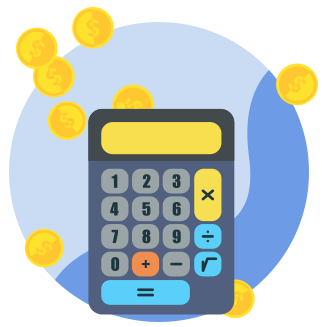Is a telegraphic transfer (TT) the best way to transfer money?
Find out what a telegraphic transfer is and how to use it to send money overseas. Figure out if it's the best option for your international money transfer.

What is a telegraphic transfer?
Put simply, a telegraphic transfer is an electronic transfer of funds.
With a telegraphic transfer, you transfer funds from your bank account to another bank account overseas. In the past, banks used a 'telex' to arrange money transfers, but now banks tend to use the SWIFT network to make an international money transfer.
Globally, there are many different terms for telegraphic transfer that actually mean the same thing. These include:
- Telex transfer
- T/T or TT
- TT payment
- Wire transfers (US and Canada)
- Bank transfers or international money transfers
- SWIFT payment
The term 'telegraphic transfer' is still popular in business, particularly in the UK, Australia and New Zealand. In Japan, 'telegraphic transfer' or 'telegraphic transfer rate' is used to describe the retail exchange rate a bank offers.

How a telegraphic transfer works
When you make a telegraphic transfer, the money moves from your bank usually through the SWIFT network. On the way, the money may go through a network of correspondent banks before landing into the overseas account. This is why telegraphic transfers can be slow and more expensive than other types of international money transfers.
Most telegraphic transfers take 3-5 business days.
Do telegraphic transfers work in Australia?
Yes. Telegraphic transfers are usually available for sending within Australia. Different banks may use different names for this service. NAB calls a local TT payment a Real Time Gross Settlement (RTGS) – Domestic Telegraphic Transfer for example. Fees are likely to apply for a domestic telegraphic transfer, in the region of 30 AUD.
When to use and when to avoid telegraphic transfers
Telegraphic transfers (TT's) are convenient for Australians sending larger amounts overseas. Banks may charge a fixed fee so if you send larger amounts, it won't take up as much of the total amount. Small to medium-sized businesses often use TT's through their bank to make their transfers for international payments. This is often because banks offer companies additional financial products that can make it worthwhile.
However, if you're going to use your bank to make your TT, make sure you understand exactly what all the fees and exchange rates will be for your transfer. The fee structures of different banks can vary a lot - and usually you’ll find it costs more to send money in a branch or by phone, compared to online or in the bank’s app.
You may find your bank waives the transfer fee if you set up your payment using their digital banking system. However, you still need to be aware of the markup that's usually added to the exchange rates, which is a fee - and any correspondent fees you might need to cover. We’ll explore the costs of sending a bank telegraphic transfer a little later. It’s good to know that alternative digital providers may cost less overall compared to sending a payment with your bank. Digital providers often use a better exchange rate for currency conversion, which can make a big difference to the final amount you pay. We’ll look at some good options to choose from in a moment.
Pros and cons of telegraphic transfers
| ✅Convenient
✅Familiar ✅Safe |
❌Expensive
❌Nonreversible ❌Attracts scammers |
Alternatives to banks’ telegraphic transfers
You’re not limited to using your bank if you want to send a payment overseas. Instead you could choose a digital alternative provider which supports quick and convenient international transfers. Often you’ll find the overall costs are lower, and alternative providers can also offer quicker delivery times in some cases. When you use an alternative provider to send your international payment, you’ll still be able to fund the transfer from your bank, and set the whole thing up from your phone in just a few simple steps.
Here are a few providers to consider for your next international payment:
- Wise
- OFX
- Remitly
Wise
Register a free Wise personal account to send money to 140+ countries, in 70+ currencies. You’ll be able to pay for your Wise transfer in AUD digitally, using a bank transfer, card or PayID, and the funds are then converted to the currency you need using the mid-market exchange rate with no added fee. Sending money around the world has low, transparent fees, from 0.65%, and 60%+ of transfers are instant, with 80%+ delivered in less than 1 hour*.
*The speed of transaction claims depends on individual circumstances and may not be available for all transactions

OFX
OFX is a currency specialist which lets you send payments from Australia to 170+ countries in a broad selection of currencies. There’s no fee to send a payment of 10,000 AUD or more, with a 15 AUD flat fee for transfers of a lower value. The exchange rate will also include a small markup - a fee - which you can see by comparing the rate you’re quoted to the mid-market rate for your currency pair.

Remitly
Remitly is a convenient option to send payments to 170+ countries globally. You can set up your transfer in the Remitly app or online, and the money can be sent for cash collection, or to a bank or mobile money account. The exact options and fees do depend on the specific country you’re sending money to, but you can easily model your transfer online to see what’s on offer.

How to make a telegraphic transfer
There are three key steps to setting up a telegraphic transfer with your bank:
![]()
Step 1: Go to your bank
You can go to your bank's branch, internet banking website or app and ask to send a telegraphic transfer or TT.
![]()
Step 2: Transfer
Fill in the details of the person you're sending the money to. If you're sending it to your own international account, fill in your own details.
![]()
Step 3: Pay
Pay your bank for the transfer. You can pay for the whole transfer or you can have fees deducted from the amount received overseas.
What details do you need to give for your TT bank transfer?
To send a telegraphic transfer to an overseas bank account from Australia you usually need to provide the following information:
Transfer details
- Amount
- Currency
- Reason for transfer
Your details
- Your name (or person you're sending money on behalf of)
- Account number
- Personal address
Recipient (Overseas) Account details
- Bank's name
- Branch address
- IBAN/SWIFT Code
- Recipient international bank account number
- Recipient account name (full name without initials)

Your bank may request more information about your international money transfer to meet anti-laundering regulations or internal security policies.
Receiving a telegraphic transfer from overseas
If you want to receive a telegraphic transfer from overseas, the process is the same just in reverse. Your sender needs to give their bank the following details:
Your Bank details
- Bank's name
- BIC/SWIFT Code (not IBAN)
- Branch address
Account details
- BSB number
- Account number
- Account name (full name without initials)
Personal details
- Your full name without initials
- Your street address (can't be a post office box)

Here is a summary of details required for Australia's major banks:
| Bank Name | SWIFT / BIC Code | Branch Address Locator |
| Commonwealth Bank of Australia | CTBAAU2S | CBA Branch |
| Westpac Bank | WPACAU2S | Westpac Branch |
| ANZ Bank New Zealand Limited | ANZBNZ22 | ANZ Branch |
| National Australia Bank | NATAAU3303M | NAB Branch |
Plus remember, the transfer will take a few days to get to you and you may need to pay an incoming telegraphic transfer fee.
Related: 3 Things You Need to Know About Receiving Money from Overseas
How much does a telegraphic transfer cost?
Here are the telegraphic transfer fees for some of the largest banks in Australia:
Westpac: No transfer fee when sending online, 32 AUD in a branch
NAB: No transfer fee for online payments over 10,000 AUD, varying fees below this amount, phone payments can cost up to 32 AUD
ANZ: No transfer fee when sending online, 30 AUD in a branch or by phone
Altogether, there are 4 fees you can be charged for telegraphic transfers including:
- Your bank transfer fees - you can sometimes decide whether to pay for the whole transfer cost (including 'correspondent fees' and 'receiving bank fees')
- Intermediary bank fees - middleman or corresponding bank fees for transferring money usually via the SWIFT network
- Exchange rate margin - banks add a margin to the exchange rate to cover their own fees or make profit
- Receiving bank fees - foreign banks may charge you a processing fee, which is deducted from the amount of money sent
This means that while some of the major banks in Australia state that there’s no transfer fee to send an overseas payment, that’s really only half the story. Even if your bank waives its own transfer fee, the chances are that they’ll add a fee to the exchange rate. Plus, intermediary banks and the recipient's own bank can deduct their own fees which are beyond the control of your bank.

Bank telegraphic transfer fixed fees
We said earlier that making a telegraphic transfer through your bank can be expensive. Australian bank fees also vary depending on:
- Where you pay: Online banking is cheapest $5-15; branch and phone is most expensive $20-30
- Currency exchange: Converting Australian dollars to a foreign currency. Without conversions the fee is typically $10-25
Combine the telegraphic transfer fees with the exchange rate margin, and you could be overpaying for your transfer by over 5% even before it leaves Australia. So on a $1,000 transfer, you can pay over $50 in telegraphic transfer and exchange rate costs. That's not even taking into account other fees like:
- Correspondent bank fee $10-20
- Receiving bank fee $20-30
Make sure you get your transfer details correct and you're ready to go ahead with your transfer. For cancellations, amendments/refunds or investigations into your telegraphic transfer, banks can also charge $20-30 per request - ouch!

Bank exchange rate calculators
Most banks provide a currency calculator which show exchange rates for telegraphic transfers on their websites. However, banks tend to quote the market rate, not the actual rate you'll get for your international transfer.
This makes it tricky to compare the exchange rates and total costs that banks offer against other international money transfer options like specialist money transfer providers. Our comparison table accurately does this for you.
Our table shows Australian banks quote exchange rates that are typically 2-3% worse than the base exchange rate.
Is a telegraphic transfer safe?
Banks in Australia are safe and legitimate. They have an Australian Financial Services License (AFSL) and are regulated by the Australian Securities and Investment Commission (ASIC). Banks have to follow very stringent guidelines to send your money overseas.
In terms of online security, banks protect your personal data from fraud and theft. They encrypt your data and create secure connections with your website browser when you're providing your personal details.
While telegraphic transfers through your bank are safe, it doesn't mean it's completely free from scammers. The problem is once your money is transferred, you have almost no way of getting it back and it can take a long time. Many complaints about telegraphic transfers come from victims of fraud.
Australian banks only have limited responsibility for a transfer once funds have left the country. This can be a problem, because you don't know what's happened to your money until the very end of the process. I.e. when your funds haven't arrived into the overseas account.

Banks have a variety of ways for you to send and receive money. Including a mixture of payment systems, payment types and outgoing and incoming fees for telegraphic transfers - all detailed in each of their product disclosure statements and financial services guides. We've put together our own guides for the 'Big 4' banks to make it easier for you to find out all these details:
Conclusion
While sending a telegraphic transfer through your bank is safe and familiar, it’s not necessarily always the best option for moving your money to a bank overseas. Bank telegraphic transfers can take several days to arrive, and may also have pretty complicated - and high - fees. Several different fees can apply to a single payment, including an exchange rate markup and third party intermediary fees, which makes it tricky to see what you’re really paying.
As an alternative you can also send your money using a specialist provider, such as Wise or OFX. You’ll be able to set up an account with your preferred provider online or in their app, and send money globally with low fees and great exchange rates. Compare a few options using our comparison tools, to see which service will be best for your next overseas payment.
FAQ
Is telegraphic transfer the same as bank transfer?
The terms telegraphic transfer and bank transfers are used interchangeably, and both refer to digital transfers of funds from one bank account to another.
How long does a telegraphic transfer take?
The delivery time for a telegraphic transfer can vary a lot depending on how you set up your payment, the country you’re sending money to, and the value of the transfer. Some payments with specialist services like Wise may arrive pretty much instantly. Bank telegraphic transfers usually take 0 - 5 days.
Which is better, TT or LC?
If you’re transacting for your business, a TT can be faster and cheaper than using a letter of credit (LC). You’ll need to check the options available to you from your bank and through alternative providers like Wise Business, to see what works best for your specific situation.
Compare the best deals to transfer money overseas
Your currency knowledge centre
5 Cheaper Ways to Transfer Money Overseas
Using a bank is one of the easiest ways of transferring money overseas, but can also be the most costly. There are alternatives that can make the whole process cheaper.
- Read more ⟶
- 2 min read
International Money Transfer Comparison and Reviews
Find the best international money transfer exchange rates to send money overseas from Australia. Compare the rates and fees from leading banks and money transfer services.
- Read more ⟶
- 6 min read
5 Good Alternatives to OFX
While OFX is easy to use, and offer good exchange rates, other companies can do the same. In this article, we take a look at companies that offer similar services to OFX to see how they stack up.
- Read more ⟶
- 2 min read








